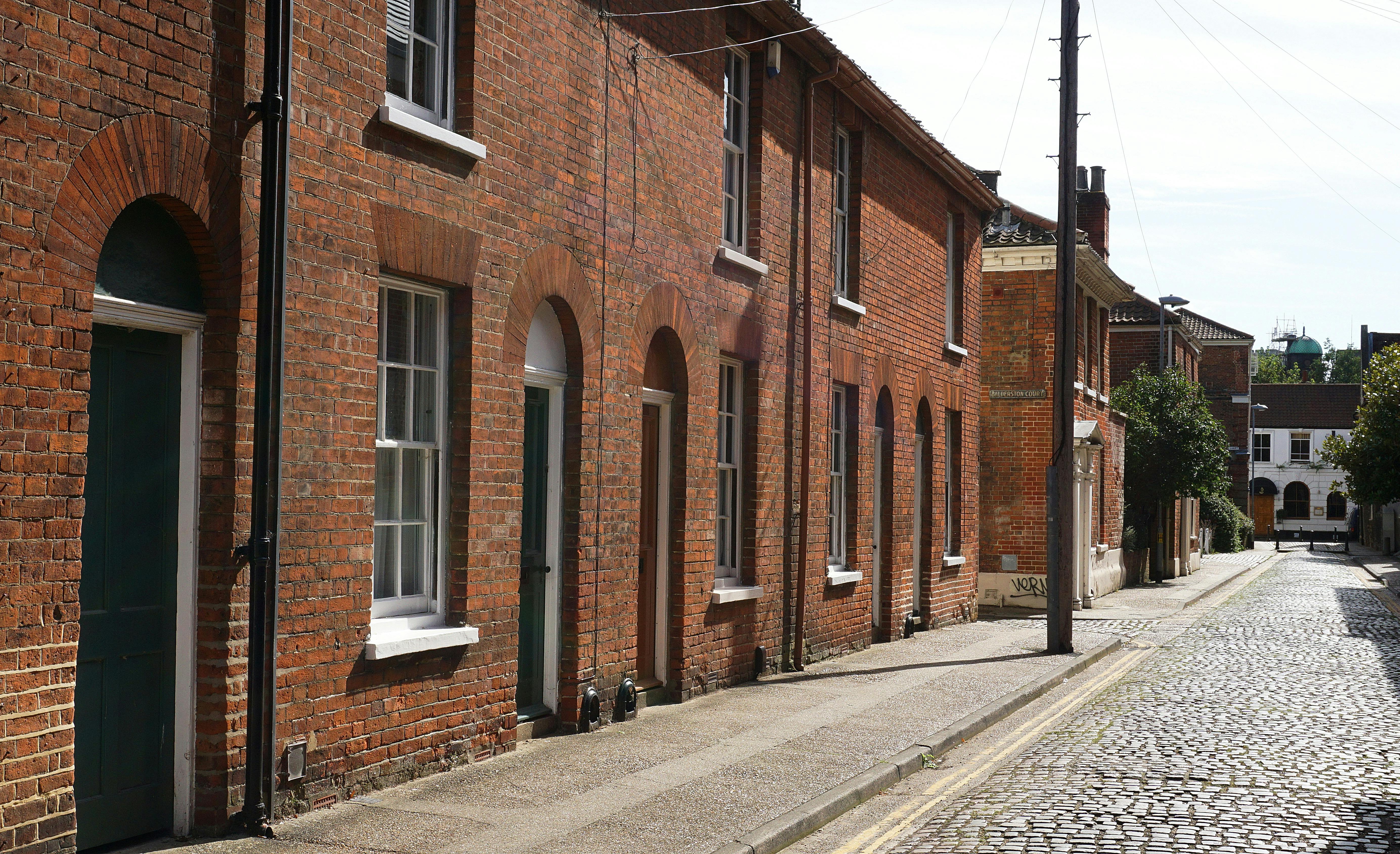Jane Austen occupies an ambivalent position in literary history. She is too little of a 19th century writer to call her “romantic,” too much of a person of her time to call her a classic. Contemporaries of hers such as Wordsworth and Charlotte Bronte found in her works a lack of feeling, passion and imagination. Edward Fitzgerald complains that:
“She never leaves the room”
However, the 20th century has seen Jane Austen elevated by critics of various shades to being one of the greatest female novelists and of the six novels she wrote, all are considered classics, with at least three of them among the best. in English. fiction. Among all the Jane Austen novels “PRIDE AND PREJUDICE” & is the greatest work of hers. It shows her greatness, limitations and aesthetic vision of her on different colors and aspects of human life. The novel leads readers to an abstract idea, the idea of pride in one character and prejudice in another. So the novel is mainly concerned with ideas. The characters in the novel display different types of humor, various traits of human behavior: Mr. Bennet is a cynic; Lydia a flirt, Mary a pedant, Darcy a character, puffed with pride, Collins a potential conceit, Sir William Lucas a weak fool and so on. “PRIDE AND PREJUDICE” is the love story of a man and a woman, the man held back by invincible pride and the woman blinded by prejudice. Furthermore, it is a satire of life in a small town called Longbourn in
the south of England. So the novel is important in more ways than one. It is important both historically and critically. Historically, it introduced a new type of fiction. The 18th century was a time of picturesque romances with splendid places, high towers and underground passages. It was a time of stories of terror, horror and mystery. Faced with such novels, sentimental novels full of tears and sorrows were written. Austen’s “PRIDE AND PREJUDICE” found a middle path between the two. This novel was written after “SENSE AND SENSIBILITY” and “NORTHANGER ABBEY”. This is therefore symmetry, a tightly knit form and a unified structure. It can be said that it is the first English novel in the true sense of the term. Jane does not follow any of the traditions of her predecessors. She rightly started her own fictional tradition, which was followed by other novelists from England. The first chapter of the novel contains an orchestration note. Various elements have been subordinated to a well-defined pattern. The chapter opens with the statement:
“It is a universally recognized truth,
That a single man in possession of a
Good fortune must be in lack of wife”
And then follows the conversation between Mr. and Mrs. Bennet. The only concern of Mrs.
Bennet in his life is to marry off his daughters. The entire novel is based on the domestic theme. A reader trying to get closer to action, fast movement, drama, or crises would be disappointed. The characters seem to follow the path of the philosopher. “Trivial action; limited movement” that’s all we find in the novel.
Hence the characters seem devitalized and anemic, at times devoid of flesh and blood. There are no fireworks or dynamics in the story. Jane is a viewer of characters. She puts men and women in a certain environment and continues to study them in detail. She gives alternative readings of her characters, compares them, and finally discovers the correct method of approaching the human personality. This method has been followed in this novel. There are a lot of contemporary elements in the novel. The description of dances, dances and parties is scattered throughout the story. The key point of the book is the study of human behavior. Jane is almost like Shakespeare in this regard. There is an obvious exclusion of death, chance or fate. None of the characters die in the course of the story. Elizabeth, Lydia, Jane, Mary and Catherine, all the Bennet sisters, are preoccupied with their own personal and domestic problems. None of them is touched by physical agony or ailment.
Similar is the case of Darcy, Bingley, Collins or Sir William Lucas. In addition, there is a total absence of a mafia or organized society threat. It is a placid atmosphere of quiet country houses and parlors that we find in the novel from the beginning to the end. Longbourn, Hansford or Pemberley are in no rush or enthusiasm about it.
“PRIDE AND PREJUDICE” was first written in 1797 under the title “First Impressions.” It was later revised and published under the title in 1823. In the novel, first impressions play an important role, Elizabeth, the protagonist, being deceived in her judgment and estimation of Darcy and Wickham. Her consideration and sympathy for the latter and her hostility and prejudice against Darcy are due to first impressions. But when we study the novel deeply and seriously, we can easily see that the title is more suitable and appropriate for it. The novel is more about Darcy’s ‘Pride’ and Elizabeth’s ‘Prejudice’ and Darcy’s change of attitude and Elizabeth’s correction of first impressions of her.
Subject matter-wise, Austen’s focal point is marriage and courtship. Marriage was a major social concern in Austen’s time, and she was fully aware of the disadvantages of remaining single. In a letter to Fanny Knight, she wrote:
“Single women have a terrible propensity
For being poor that is a very strong one
Argument in favor of marriage
Charlotte Lucas, an important character in this novel, giving reasons to accept Mr. Collins, tells Elizabeth:
I’m not romantic, you know? I never was
I only ask for a comfortable home, and considering
Character, connections and situation of Mr. Collins
In life, I am convinced that my chance of happiness
With him he is as fair as most people can boast of.
Enter the state of marriage.”
This statement reflects the impotence of Charlotte, due to her economic inequality, she was forced to accept an undesirable suitor like Collins, through this we can glimpse the social life of that time in England, showing the miserable situation of women in a society dominated by men. Marriage was the only provision for well-educated young women of small fortune. The only option for a single woman in Austen’s time was to care for someone else’s children as Jane Austen herself did, as there were no outlets for women in industry, commerce, business or education. The novel consists of seven marriages, all of which are intended to reveal the requirements of a “good” and “bad” marriage. Three couples—Mr. and Mrs. Bennet, Charlotte and Collins, Lydia and Wickham—reveal bad marriages and the importance of good judgment and appropriate sentiments in determining a couple’s future happiness. Mutual respect, the foundation of a strong marriage, is missing from the Bennets’ marriage. Prudence alone should not dictate, as it does in Charlotte’s case, nor should it be disregarded, which is what Lydia does. Esteem, common sense and mutual affections are the right ingredients for a successful marriage as indicated by the marriage of Darcy Elizabeth. Austen firmly believed that in order to form a correct judgement, one must have correct principles and insight into the nature of other people. You have to know how to see through affectation, deceit and hypocrisy; one should not be a victim of flattery, one should not be carried away by other people’s opinions. Austen’s fiction is suffused with irony in both language and situation. As Prof. Chevalier comments that:
“The basic characteristic of all irony is
A contrast between a reality and
an apparition”
Here, in this novel, we repeatedly find the irony of the situation, which gives a twist to the story. Darcy comments about Elizabeth that:
“She’s not pretty enough to tempt me”
We savored the ironic flavor of this statement much later when we reflected that the woman who wasn’t pretty enough to dance with was really good enough to marry. In this novel, the irony of the character is even more prominent than the irony of the situation. It’s ironic that Elizabeth, who prides herself on her perception, is quite blinded by her own prejudices and seriously misjudges convoluted characters. Wickham seems suave and charming, but ironically he is an unprincipled rogue. Darcy appears proud and haughty but ironically proves to be a true gentleman. The Bingley sisters hate the Bennets for their vulgarity, but they themselves are vulgar in their behavior. Darcy is also critical of the rude Bennet family, but ironically, his aunt, Lady Catherine, is just as vulgar and rude. Thus, the novel abounds in the irony of situations.
Austen was a moralist, an eighteenth-century moralist; in some respects she was the last and most beautiful flower of that century. She was born a few years later than Wordsworth, Coleridge, and Scott. When she died, Byron was famous and Shelley and Keats had already published. She belongs to the period known as the romantic revival or the revival of the imagination, but these titles do not follow her in the least. Her novels belong essentially to the time of Johnson and Cowper. In fact, she is a classical novelist. There is no unbridled emotion or excess of passion as in the romantics. All of these are disciplined by reason and intellect. This elegance is seen both in her dialogues and in the structure. But there is hardly any description of nature in Jane Austen, unlike Wordsworth and Coleridge, who deify nature. Jane Austen’s novels are also marked by a total concern for the upper middle class, which can be attributed to the fact that this was the class she knew intimately. A reading of Austen’s novels shows that her materials are extremely limited in themselves. Her subject matter is limited to the manners of a small section of the rural gentry, who have apparently never cared about death or sex, hunger or war, guilt or God.
However, the exclusion and limitations are deliberate. Austen herself referred to her work as “Two Inches of Ivory”. This novel, like other Austen novels, has a tight physical setting. The story revolves around Netherfield Park, Longbourn, Hansford Parsonage, Meryton and Pemberley. There is no reference to nature itself. It is one of the ironies of English literary history that, at a time when the English Romantic writers Wordsworth, Coleridge, Byron, Shelley, Keats, and others were discovering external nature, Austen manages to keep her characters cooped up at home. Since her settings are the drawing rooms, ballrooms, parks, and gardens of a civilized leisure class, she was unlikely to feature lunatics, villains, or ghostly figures. The greatest villainy to upset the uniformity of a Jane Austen novel is Wickham’s elopement with Lydia. Austen’s theme was also limited to love and marriage. In the six novels, there are beautiful girls who are waiting for truly eligible bachelors to marry. It was the period of the American War, the French Revolution and the Napoleonic Wars. But Jane Austen’s characters are blissfully unaware of these tumultuous events.
In short, we can say that within its limited range, Jane Austen’s art is perfect. She handles characters and events, dialogue and plot with an exquisite and masterful touch, fusing all the elements of the novel into one, weaving and interweaving them so well that no thread can be separated. In her “Two Inches of Ivory,” Jane carves with miniature delicacy to present a polished and refined work of art.
Written by:
EMMA ALAM.




